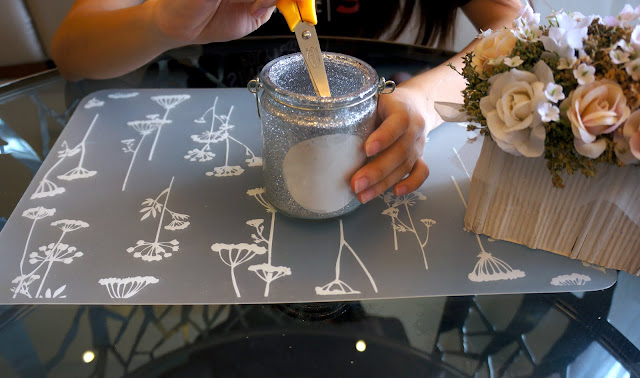CLIFFORD PIER (COLLYER QUAY)
 |
Present: Today, Clifford Pier has been refurbished into Food and Beverage establishments. It is now part of the Fullerton Heritage precinct.
|
CUSTOMS HOUSE (COLLYER QUAY)
 |
Present: Now, it is occupied by five-world class signature restaurants of different cuisines.
|
CAVENAGH BRIDGE
 |
Past: Cavenagh bridge is probably the oldest bridge across Singapore River to have survived in its original form. At first, they allowed passage of trams to cross the bridge.
|
 |
Present: It is converted into a pedestrian-only bridge
|
CHANGE ALLEY (Raffles Place)
 |
Past: Locals conducted barter trade with regional sea merchants and Europeans. It was recognised as a meeting place for European buyers and Asian brokers.
|
 |
Present: Due to the decline in sea travel and withdrawal of foreign troops from Singapore, the stallholders in Change Alley were affected. Now, it is turned into Caltex House and Hitachi Tower.
|
MARKET STREET (Raffles Place)
 |
Present: Up till today, there are still Hokkiens working along this street as importers, exporters and commission agents.
|
MASJID MOULANA (RAFFLES PLACE)
BOAT QUAY
 |
Past: Boat Quay used to be the hub of commerce and trade in the 1860s.
|
 |
Present: Since 1983, Boat Quay no longer serves as a port. Shophouses along Boat Quay have been carefully conserved and now house various bars, pubs and restaurants. Today, towering buildings mark the skyline.
|
ELGIN BRIDGE
 |
Present: It was restored in 1989 to beautify the Singapore River. Two pedestrian underpasses on both ends of the bridge were opened too.
|
COLEMAN BRIDGE
 |
Past: The Coleman Bridge has been rebuilt several times because it was structurally unsound. Thus, the third Coleman Bridge was built with many arches and columns.
|
 |
Present: Because of it’s wide area, it allowed two-way traffic scheme with Eu Tong Street and New Bridge Road in opposite directions.
|
CLARKE QUAY
 |
Present: It was after the cleanup project, Clarke Quay was designated a heritage conservation area, redeveloped into a commercial and entertainment district.
|
READ BRIDGE
 |
Present: In 1991, Read Bridge was converted into a pedestrian bridge.
|
FORMER THONG CHAI MEDICAL INSTITUTION
 |
Present: It was reopened as an arts and crafts centre in 1979. Since then, it has been used for various other purposes, including a discotheque.
|
MASJID OMAR KAMPONG MELAKA
 |
Past: It was a gathering point for the Malay community, as well as Muslims originating from India, the Middle East and Southeast Asia. It was declared as a historic site on 11 November 2001.
|
 |
Present: Now, most of the worshippers are office workers from the nearby city centre.
|
TAN SI CHONG SU
 |
Past: Tan Si Chong Su was built as the ancestral temple and assembly hall of the Tan clan in Singapore.
|
 |
Present: The temple was then published as a national monument and it has been open to all Chinese worshippers since 1982.
|
CLEMENCEAU BRIDGE
 |
Past: It was first built in 1940 to replace Pulau Saigon Bridge.
Present: In the 1990s, it was rebuilt into a vehicular bridge.
|
ORD BRIDGE
 |
Present: It was officially opened in 1886 by another Straits Settlements’ governor Sir Frederick Weld (1823-1891).
|
ROBERTSON QUAY
 |
Past: Warehouses and wharfs were built in European and Chinese style in the 1880s.
|
ALKAFF BRIDGE
 |
Past: It was designed to shape like a tongkang (a type of wooden boat used to carry goods along the river)
|
 |
Present: In 2004, a Filipino artist painted the bridge with 55 different vibrant colours, and then it was introduced as the “Art Bridge”.
|
REFLECTIONS
 |
As I embark on my heritage journey, I realised that there are many more places in Singapore that embrace a colourful history that I do not know of. Young citizens today live in an environment very different from the era of the 1950s and 1960s. Most of us are losing touch with our heritage and its values, which was so cherished by our forefathers. We would simply just pass by areas without knowing the significance of the place. To be honest, out of all the places in the Singapore River Walk, there are some places that I have never been to before. This shows that we are not giving the respect and attention that each of these places deserve. As I was overlooking the scenic river, enjoying riverside rustic charm and loungy vibes along Clarke Quay, I tried to imagine what it was like in the past. Back then, life must have been tough for the people as they did not have the privileges that we have today. Life in the past was so much more different as their way of transport, communication, trade and facilities were not as modernised like how it is today. During the walking trail, certain questions were raised like why was this site located here and what was it used for. Every site has its own significance and it is for us to find out the answers to these questions. This is how learning should be and how I’d like to teach in the future instead of the usual memorising from the textbook.
It is through this activity that brings me there to discover a wealth of historical treasures from the past. Singapore River Heritage has grown with Singapore from its humble beginnings to the cosmopolitan city. It was an incredible experience that allows me to learn the social and moral values and building a strong sense of national identity. I hope that histories of Singapore will be passed down generations after generations. As a citizen, I would keep the history alive by doing local travel blog, sharing the heritage and cultures of our country that will be viewed by local & foreigners. Therefore, I am thankful that this Heritage Trail project has offered me a chance to tour around Singapore and admire the beauty and significance of the sites.
CITATIONS: thefullertonheritage.com
|




































